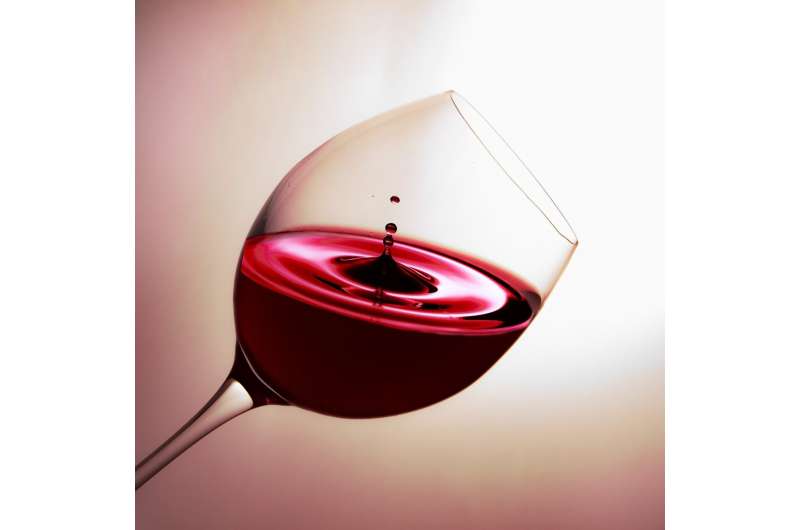This article has been reviewed according to Science X's editorial process and policies. Editors have highlighted the following attributes while ensuring the content's credibility:
fact-checked
trusted source
proofread
Uncorking the benefits: Research finds healthy use for winemaking waste

Waste from winemaking could be a valuable source of ingredients for nutraceuticals, pharmaceuticals and food coloring, according to new research from chemical engineers at Monash University.
Ph.D. student Xueqing (Rachel) Liu and Associate Professor Victoria Haritos, Monash University Department of Chemical and Biological Engineering, found that compounds derived from red wine grape varieties have significant levels of bioactive natural compounds called polyphenols and anthocyanins.
"Bioactive polyphenols and anthocyanins could have a number of commercial applications as functional ingredients, in dietary supplements and as natural food colorings," explained Liu.
Diets rich in polyphenols, which are found in a range of fruits, vegetables and cereals, have been associated with protection against developing cancers, cardiovascular diseases, diabetes, osteoporosis and neurodegenerative diseases in a number of epidemiological studies.
Anthocyanins, the pigments responsible for the colors red, purple and blue in many fruits and vegetables, have also been associated with antioxidant effects and the prevention of cardiovascular disease, cancer and diabetes among other conditions.
In Australia, around 2 million metric tons of wine grapes are crushed annually, with about 20% by weight remaining as waste, including skins, seeds and stalks, after processing.
The majority of winemaking waste is currently returned to the land as compost, or other low value uses and the potential value of the bioactives it contains goes unrealized.
"Across the Australian wine industry this means there is a massive volume of waste from which these compounds could be recovered and used," said Professor Victoria Haritos.
"We see great opportunities and are keen to explore how this waste product can be processed commercially," she added.
The initial research has been published in the international journal Cleaner Waste Systems. In the next phase of her research, Liu will further investigate processes for extracting the bioactive compounds and their potential uses including functional non-alcoholic beverages.
More information: Xueqing Liu et al, Analysis of the fate of valuable bioactive polyphenols during commercial winemaking and their partitioning into wastes for valorization, Cleaner Waste Systems (2023). DOI: 10.1016/j.clwas.2023.100104
Provided by Monash University





















